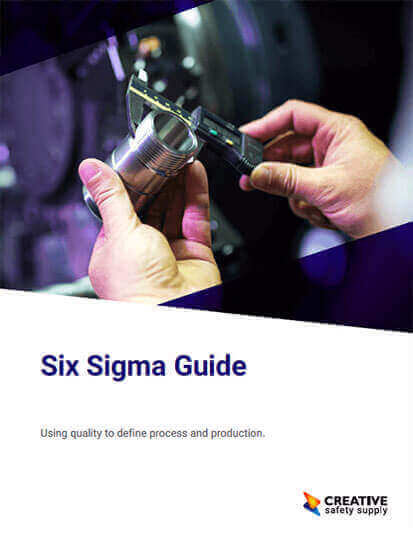
Lean versus Six Sigma: Which is better for your business?
Inefficiency in business processes can lead to customer dissatisfaction and increased costs. For example, consider inventory mismanagement at a warehouse of a global ecommerce store. If items are not in the right place, order pickers will not only take longer than necessary to find them but they may also select the wrong items. This, in turn, could lead to unhappy customers and returned orders–and financial loss for you.
For this reason, successful businesses actively incorporate business management techniques such as Six Sigma and the Lean method in their operations to help reduce inefficiency and maximize profits.
What Is the Lean Method?
The Lean method is a quality improvement technique that optimizes business processes by minimizing waste and maximizing effective resource utilization. The 5S methodology is a perfect example of a concept derived from Lean management. It refers to creating well-organized and clean workspaces that are safe and easy to work in.
The Lean method follows five key principles that guide businesses to work smarter and more efficiently. These include:
- Identify value: Determine what your customers really care about in your product or service. That's the value they're paying for.
- Map the value stream: Trace the steps it takes to create your product or service from start to finish. This helps you understand the entire process and identify any unnecessary steps or delays.
- Create flow: Arrange your processes so that work flows smoothly from one step to the next, without stopping or getting stuck (particularly in emergency situations). This helps things move faster and reduces waiting times.
- Establish pull: Instead of making products ahead of time and piling up inventory, manufacture products as they're needed. This ‘pulls’ production along and reduces waste.
- Strive for perfection: Keep looking for ways to improve. Encourage everyone in your organization to make suggestions and keep refining processes to make them as efficient as possible.
The Lean method was initially developed by Toyota in an attempt to reduce production costs.
What Is Six Sigma?
Six Sigma is a data-driven methodology for quality improvement. It was developed by the manufacturing giant Motorola, where Bill Smith devised this model to reduce variations in the company’s electronic products.
Six Sigma ensures consistent, high-quality outcomes using the DMAIC framework:
- Define: Specify your goals and customer deliverables.
- Measure: Quantify current performance by gathering data.
- Analyze: Study collected data to look for patterns and root causes of defects.
- Improve: Implement changes to address issues and enhance processes.
- Control: Establish measures to sustain improvements and monitor ongoing performance.
For new processes, you can use the DMADV version of the Six Sigma model, which stands for:
- Define
- Measure
- Analyze
- Design
- Validate
The only difference between the two is the last two steps of DMADV: design and validation. When it comes to design, you have to create a new process to meet customer expectations and needs. The validation step is all about testing the designed process to assess its effectiveness.
Lean Versus Six Sigma: How Are They Different?
Here are four areas where the Six Sigma and Lean methodologies differ:
- Focus: Six Sigma targets defect reduction and process consistency, while the Lean method concentrates on waste elimination and value enhancement.
- Methodology: Six Sigma employs statistical analysis and data-driven decision-making, whereas the Lean method emphasizes process standardization
- Problem-solving: Six Sigma's DMAIC framework provides a structured path for problem-solving, while the Lean method’s focus on continuous improvement makes it a flexible approach.
- Scope: Six Sigma is good for complex problems that require accuracy and error- minimization. Conversely, the Lean method is better suited for high-volume, repetitive processes that need speed maximization and waste minimization.
How to Choose Between Lean and Six Sigma
When choosing the right methodology for your business, consider the following factors:
- Goals: If your primary goal is to minimize defects and achieve consistency, Six Sigma might be the better fit. For waste reduction and workspace improvement, the Lean method is the way to go.
- Industry: Industries with strict quality control regulations (like the pharmaceutical sector) may benefit from Six Sigma's data-driven precision, while industries with dynamic processes (like traditional widget manufacturers) are likely to benefit more from the flexibility of the Lean method.
- Resources: Consider the availability of data, expertise, and time. Six Sigma's statistical analysis requires data, but you can reap the benefits of Lean manufacturing without in-depth data collection and analysis.


